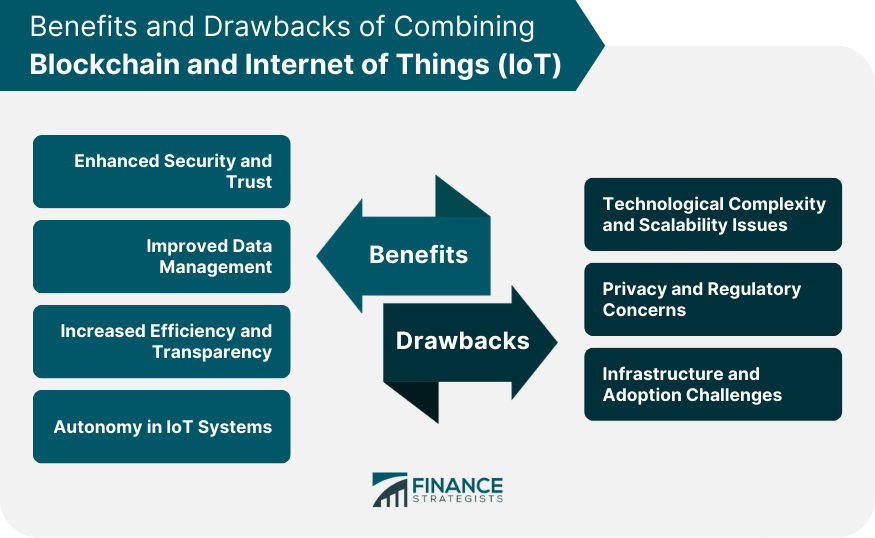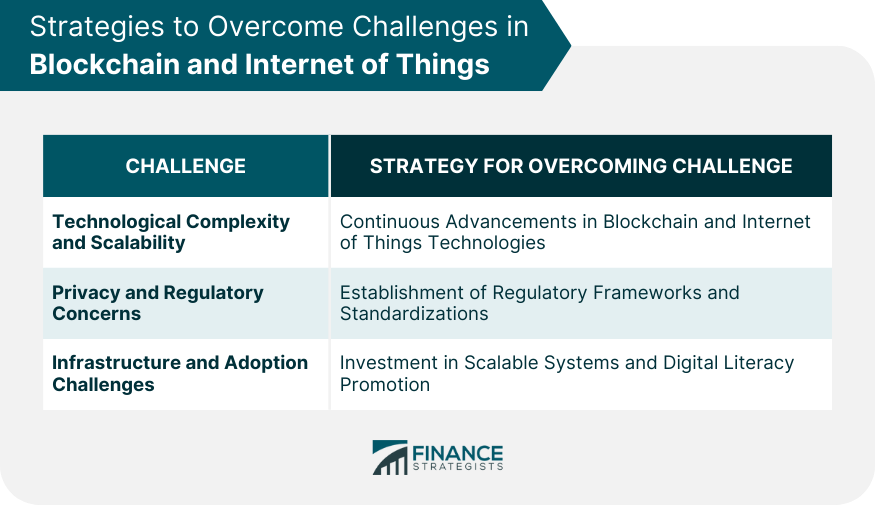Blockchain and the Internet of Things (IoT) refer to the integration of two revolutionary technologies to enhance data management and security in the digital landscape. Blockchain, a decentralized and cryptographic ledger, ensures secure and immutable record-keeping, while IoT encompasses a network of interconnected devices that collect and share data. The purpose of integrating Blockchain and IoT is to create a system where IoT devices can perform transactions and interact without the need for a centralized authority, effectively increasing efficiency, transparency, and trust. By merging the real-time data collection capabilities of IoT with the secure and transparent nature of blockchain, it can enable a myriad of practical applications across sectors, from supply chain management to healthcare, creating safer, more efficient, and more responsive digital ecosystems. In a combined Blockchain and IoT system, IoT devices perform their standard operations of collecting and transmitting data, while blockchain plays a role in securely storing and managing this data. With each IoT device acting as a blockchain node, transactions can occur between devices without the need for a centralized authority. Several sectors already leverage the convergence of Blockchain and IoT. For instance, in supply chain management, IoT devices monitor and record the conditions of goods in real-time, and blockchain provides an immutable record, ensuring traceability and preventing fraud. In smart homes, blockchain can secure data generated by IoT devices, preventing unauthorized access. Blockchain’s decentralized nature, combined with its cryptographic processes, enhances security in IoT networks. It mitigates risks associated with single points of failure in centralized systems, and by storing device data in an immutable ledger, it increases trust among users. Blockchain allows for the efficient management of vast volumes of data generated by IoT devices. It ensures the data is accurate, timely, and consistent across all nodes. This kind of robust data management is critical for decision-making processes in businesses. Blockchain increases efficiency in IoT networks by eliminating intermediaries, speeding up transactions, and reducing costs. Its transparency ensures all participants in the network have access to the same information, leading to improved accountability and trust. Smart contracts, powered by blockchain, can automate various processes in an IoT system. These self-executing contracts with predefined rules can trigger actions, enhancing the system's autonomy. Integrating blockchain with IoT introduces technological complexities. Scalability is a significant challenge as blockchain and IoT networks grow and the volume of data transactions to be processed and stored increases. The transparency of blockchain might conflict with privacy requirements in certain applications. Furthermore, regulatory standards for such a new and complex system are not fully developed, leading to potential legal uncertainties. Adopting a combined Blockchain and IoT system requires a robust IT infrastructure and significant initial investment. Additionally, there's a steep learning curve associated with understanding and using the technology, posing challenges to its widespread adoption. Continuous advancements in both blockchain and IoT technologies can help overcome scalability and complexity challenges. Researchers and developers worldwide are working on innovative solutions to improve the performance and usability of such systems. Establishing clear regulatory frameworks and standardizations can address privacy and legal concerns. These can define how data is managed, stored, and shared in a Blockchain-IoT system, ensuring users' rights are protected. Investing in scalable IT infrastructure and promoting digital literacy can help overcome adoption challenges. Tailored strategies to educate end-users about the benefits of the technology can also aid in its widespread adoption. The fusion of Blockchain and IoT has vast implications across multiple industries. In healthcare, it can enhance patient data security and traceability of drugs. In agriculture, it can improve food safety by ensuring transparency in the supply chain. The possibilities are endless and transformative. At a broader societal level, Blockchain-IoT systems can contribute to improved security, privacy, and trust in digital platforms, enhancing their societal acceptance. Economically, these systems could lead to cost savings, new business models, and economic growth by creating new market opportunities. The convergence of blockchain and the Internet of Things is a breakthrough that promises to enhance digital data management and security and transform a multitude of sectors. By offering improved security, efficient data management, increased efficiency, and enhanced transparency, blockchain enriches IoT systems with features that combat its inherent vulnerabilities. However, challenges such as technological complexity, scalability issues, privacy concerns, and adoption hurdles are to be navigated wisely. Strategic solutions involving technological advancements, regulatory frameworks, scalable systems, and education can help overcome these obstacles. Ultimately, the union of blockchain and IoT has immense potential to impact various industries and society, ushering in enhanced digital trust, novel business models, and significant economic growth. Harnessing this potent combination could pave the way for a future where technology serves as a steadfast pillar of secure, efficient, and transparent operations.What Is Blockchain and the Internet of Things?
How Blockchain and the Internet of Things Work Together
Integration of Blockchain With IoT
Practical Applications and Use Cases
Benefits of Combining Blockchain and the Internet of Things
Enhanced Security and Trust
Improved Data Management
Increased Efficiency and Transparency
Autonomy in IoT Systems
Drawbacks of Integrating Blockchain and the Internet of Things
Technological Complexity and Scalability Issues
Privacy and Regulatory Concerns
Infrastructure and Adoption Challenges

Overcoming Challenges: Strategies and Solutions of Blockchain and Internet of Things
Technological Advancements
Regulatory Frameworks and Standardizations
Scalable Systems and Adoption Strategies

Impact of Blockchain and Blockchain and Internet of Things Integration
Bottom Line
Blockchain and Internet of Things FAQs
The integration of Blockchain and IoT is a system where IoT devices perform their standard functions of collecting and transmitting data while blockchain securely stores and manages this data. Essentially, each IoT device acts as a blockchain node, enabling transactions to occur between devices without a centralized authority.
Practical applications of Blockchain and IoT can be seen in various sectors. For example, in supply chain management, IoT devices can monitor and record the conditions of goods in real time, while blockchain provides an immutable record for traceability and fraud prevention. In smart homes, blockchain can help secure data generated by IoT devices, preventing unauthorized access.
The combination of Blockchain and IoT offers numerous benefits, such as enhanced security and trust due to the decentralized and cryptographic nature of blockchain, improved data management, increased efficiency and transparency by eliminating intermediaries, and autonomy in IoT systems with the help of smart contracts.
Challenges in integrating Blockchain and IoT include technological complexity and scalability issues, privacy and regulatory concerns, and infrastructure and adoption hurdles. However, ongoing technological advancements, regulatory frameworks, and adoption strategies can help overcome these challenges.
The integration of Blockchain and IoT can significantly impact various industries. For instance, in healthcare, it can enhance patient data security and drug traceability. In agriculture, it can improve food safety by ensuring transparency in the supply chain. On a broader level, these systems can lead to improved security, privacy, and trust in digital platforms, economic growth, and the creation of new market opportunities.
True Tamplin is a published author, public speaker, CEO of UpDigital, and founder of Finance Strategists.
True is a Certified Educator in Personal Finance (CEPF®), author of The Handy Financial Ratios Guide, a member of the Society for Advancing Business Editing and Writing, contributes to his financial education site, Finance Strategists, and has spoken to various financial communities such as the CFA Institute, as well as university students like his Alma mater, Biola University, where he received a bachelor of science in business and data analytics.
To learn more about True, visit his personal website or view his author profiles on Amazon, Nasdaq and Forbes.











